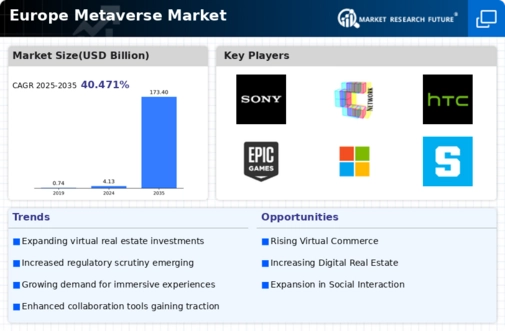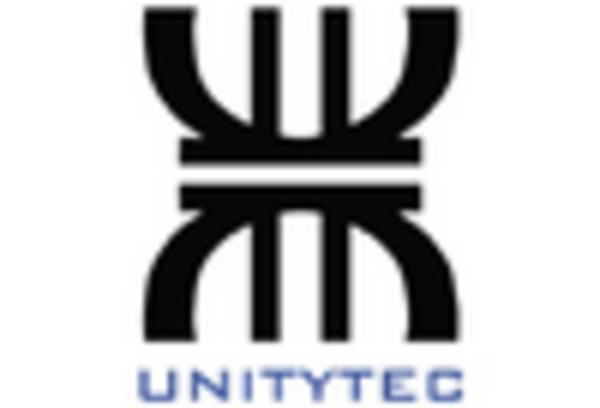Germany : Strong Growth and Innovation Hub
Germany holds a dominant position in the European metaverse market, with a value of $1,200.0 million, accounting for approximately 30% of the total market share. Key growth drivers include a robust tech ecosystem, high internet penetration, and increasing investments in AR/VR technologies. Government initiatives, such as the Digital Strategy 2025, aim to enhance digital infrastructure and promote innovation, fostering a conducive environment for metaverse applications.
UK : Innovation and Investment Surge
The UK metaverse market is valued at $1,100.0 million, representing about 27.5% of the European market. Growth is driven by a vibrant gaming industry, strong venture capital investment, and a growing interest in virtual events. The UK government supports digital innovation through initiatives like the UK Digital Strategy, which encourages tech startups and enhances digital skills across the workforce. This regulatory support is crucial for market expansion.
France : Art and Technology Convergence
France's metaverse market is valued at $900.0 million, capturing around 22.5% of the European share. The growth is fueled by a rich cultural heritage and a strong emphasis on creative industries, particularly in cities like Paris and Lyon. Government initiatives, such as the French Tech program, promote digital innovation and support startups in the metaverse space. The demand for immersive experiences in art and entertainment is on the rise, driving consumption patterns.
Russia : Tech Adoption and User Engagement
Russia's metaverse market is valued at $700.0 million, accounting for 17.5% of the European market. Key growth drivers include increasing smartphone penetration and a young, tech-savvy population. Government policies aimed at digital transformation, such as the National Program for Digital Economy, are fostering a supportive environment. The demand for gaming and social interaction in virtual spaces is growing, reflecting changing consumption patterns.
Italy : Artistry Meets Technology
Italy's metaverse market is valued at $500.0 million, representing 12.5% of the European market. Growth is driven by the integration of cultural heritage into digital experiences, particularly in cities like Milan and Rome. Government initiatives, such as the National Plan for Digital Transformation, aim to enhance digital infrastructure and promote tech adoption. The local market is characterized by a blend of traditional industries and innovative tech startups.
Spain : Youth Engagement and Innovation
Spain's metaverse market is valued at $400.0 million, making up 10% of the European market. The growth is driven by a youthful population eager for immersive experiences, particularly in gaming and social media. Government initiatives, such as the Spain Digital 2025 agenda, aim to boost digital skills and infrastructure. The competitive landscape includes local startups and international players, creating a dynamic business environment.
Rest of Europe : Varied Growth Across Regions
The Rest of Europe metaverse market is valued at $863.12 million, accounting for approximately 21.5% of the total market. This sub-region includes diverse markets with varying growth rates, driven by local demand for digital experiences. Countries like the Netherlands and Sweden are emerging as tech hubs, supported by government policies promoting innovation. The competitive landscape features both local and international players, enhancing market dynamics.


















Leave a Comment